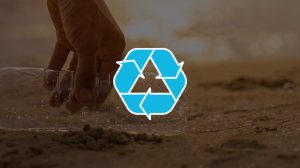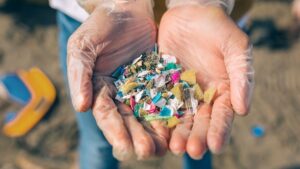Bioplastic Just as Toxic as Traditional Plastic, Study Finds
A new study suggests that bioplastics—plastics that are made from biological material instead of from petroleum and/or are engineered to be biodegradable—contain as many toxic chemicals as conventional plastic.
Plastic is an environmental nightmare. Its production emits health-threatening and planet-warming pollutants, and its disposal is no better. In the absence of a functioning global recycling system, plastic waste ends up in landfills and waste incinerators that release the pollutants from the material into the atmosphere. Ten million tons of plastic also end up in the ocean each year, releasing toxins that can harm marine life. Microplastics even make their way up the food chain to get eaten by humans. As public awareness about these issues grows, major corporations like Coca-Cola, Unilever, and Danone have put resources into developing bioplastic as an alternative.
In the new report, published in the journal Environment International, researchers examined 43 different bioplastic products, including single-use cutlery, chocolate bar wrappers, soda bottles, and wine corks. These represented nine kinds of bioplastic materials on the market, including varieties made from organic matter like plants and algae, ones that biodegrade over time, and ones that met both of those criteria.
The scientists examined the 43 products using a genetic analysis known as in vitro bioassays, as well as spectrometry, a kind of analysis that observes a material’s interactions with light. Their observations suggested that some 80% of the products contained more than 1,000 different chemicals, and some included as many as 20,000 chemicals.
Of course, not all chemicals are bad, but the researchers tested the toxicity of the materials and found that, on the whole, a slightly higher percentage of bioplastics and plant-based materials compared to conventional plastics induced baseline toxicity. They also found that the newfangled products were nearly as likely as the traditional plastics to contain chemicals that disrupt endocrine activity.
The researchers say that much more research must be done to determine the potential consequences of these materials on public health and the environment. Scientists still don’t, for instance, know the extent to which some of these chemicals can enter the human body. But the authors still say their conclusions are concerning.
“Bio-based and biodegradable plastic are not any safer than other plastics,” Lisa Zimmermann, aquatic ecotoxicology PhD student at the Goethe University in Frankfurt and lead author of the study, said in a statement.
Previous research have also shown that bioplastics marketed as compostable or biodegradable often don’t actually break down unless they’re sent to specific facilities, and bioplastics made of organic material are most often made of agricultural crops, which compete with food production for land use. Plus, agriculture is a major source of greenhouse gas emissions.



